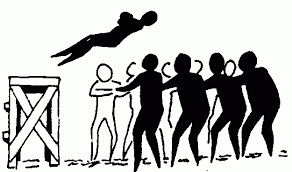(This is part 1 of a 5-part series about the T.R.U.S.T. Leadership Model)
Simplifying Leadership in a Complex World through T.R.U.S.T.
There is not enough time in the day for me to get my work done.
I wish my direct reports would take more initiative.
Why can’t my team make decisions without checking in with me for everything?
If you agree with any of the above statements, then there is a good chance there is a lack of TRUST between you and your team members. A lack of TRUST manifests itself in an inability to get your work done because you’re doing the work of others, micro-management of direct-reports and, holding back information that would allow your team to handle problems or take advantage of opportunities on their own.
TRUST needs to be earned, nurtured and developed over time through words and action. When there is truly TRUST in an organization you will typically find motivated, happy employees who can work independently, take charge when needed, and make good, informed decisions freeing up leadership to do their job… to lead.
The good news is that TRUST can be developed by focusing on the 5 areas of the “TRUST Leadership Model”
Transparency: In positive relationships there are no hidden agendas. Each person acts sincerely and can address difficult situations in a genuine, authentic manner.
Results: It’s not only about achieving the vision and meeting the goals of the organization, it’s about how things get done and the growth of the individual and the team.
Understanding: In good times or bad, understanding the motivation behind a person’s actions allows for the appropriate amount of empathy, support or direction moving forward.
Simplify: There is a lot going on so prioritizing and utilizing your calendar (and coaching your team to do so as well) appropriately will help you increase productivity and focus your attention on areas where it’s most valuable.
Team Focus: High-performing leaders typically spread credit for successes and assume responsibility for failures. The bottom line is that if the team succeeds, the leader succeeds.
Separately and collectively, each aspect of the TRUST model outlined above can be developed and become the foundation of a culture necessary to build an engaged and loyal workforce that will bring out the best in everyone.
Ken Sher is President of Sher Coaching and he is dedicated to improving individual and team performance by focusing on Executive Coaching and Career Management. If you would like to learn how TRUST can improve your team’s performance, reach out to Ken to schedule a complimentary coaching session. please call him at (215) 262-0528 or email him at Ken@shercoaching.com





Pingback: Building TRUST Through Transparency - Sher Coaching
Pingback: Simplifying Leadership Through T.R.U.S.T…Understanding - Sher Coaching